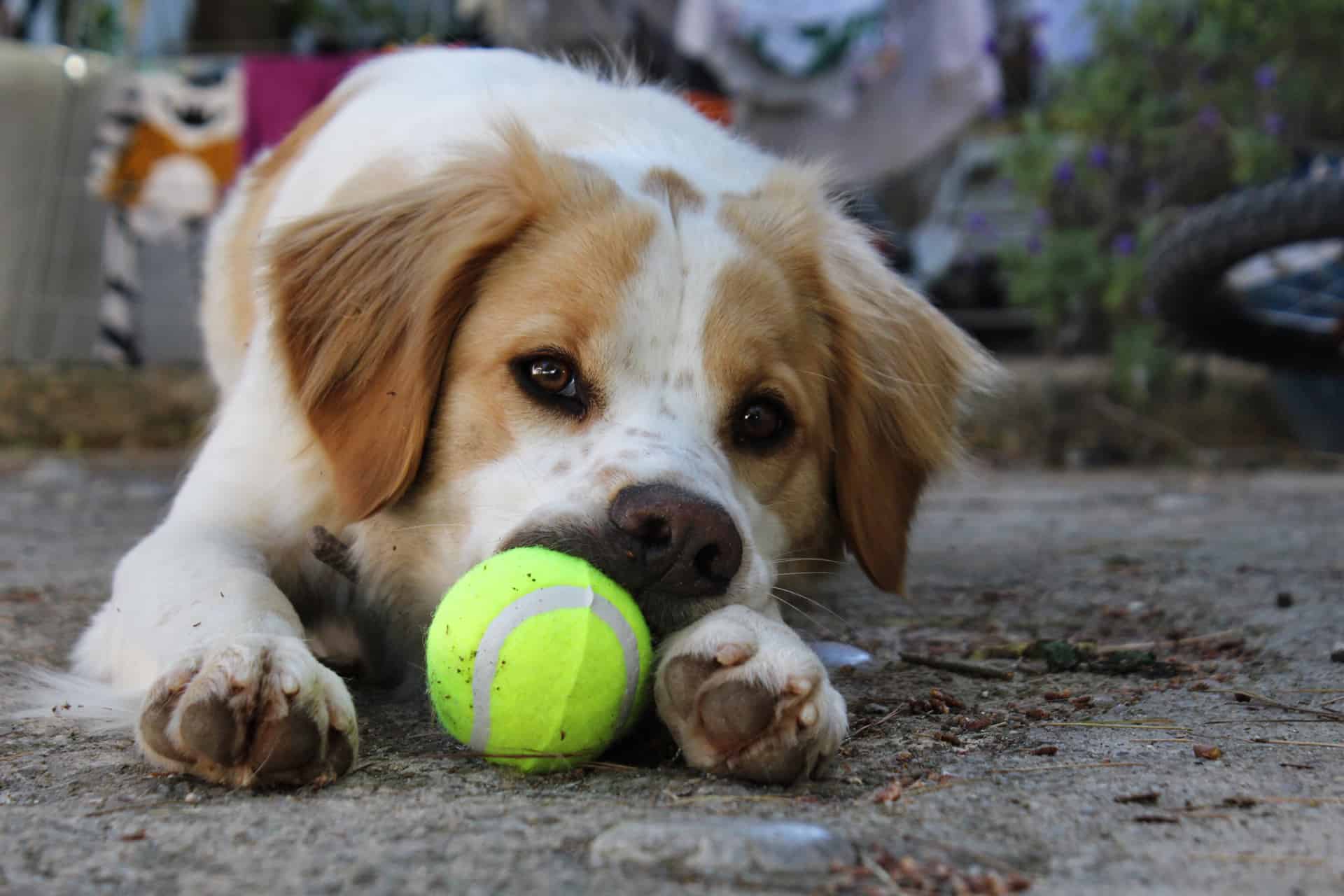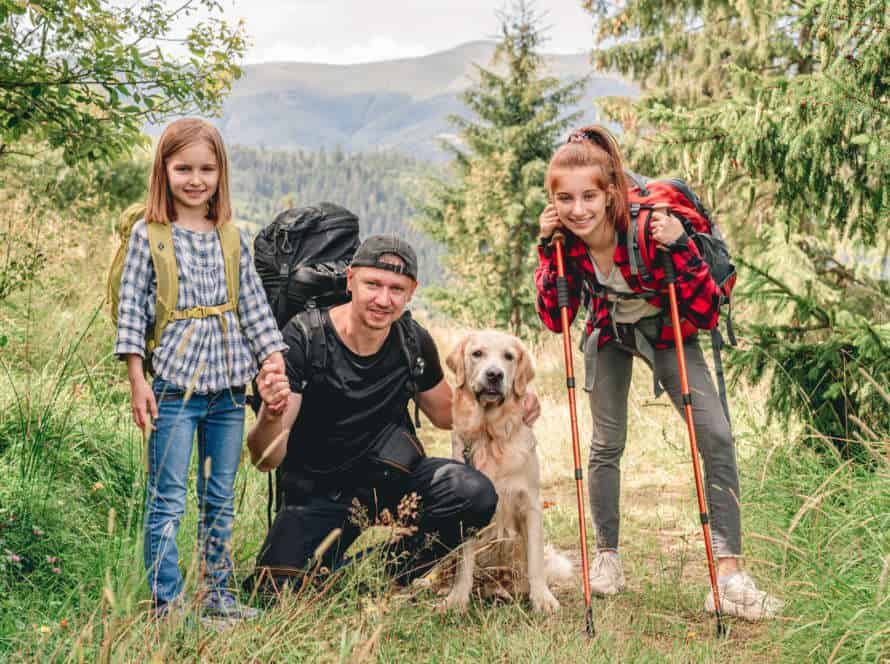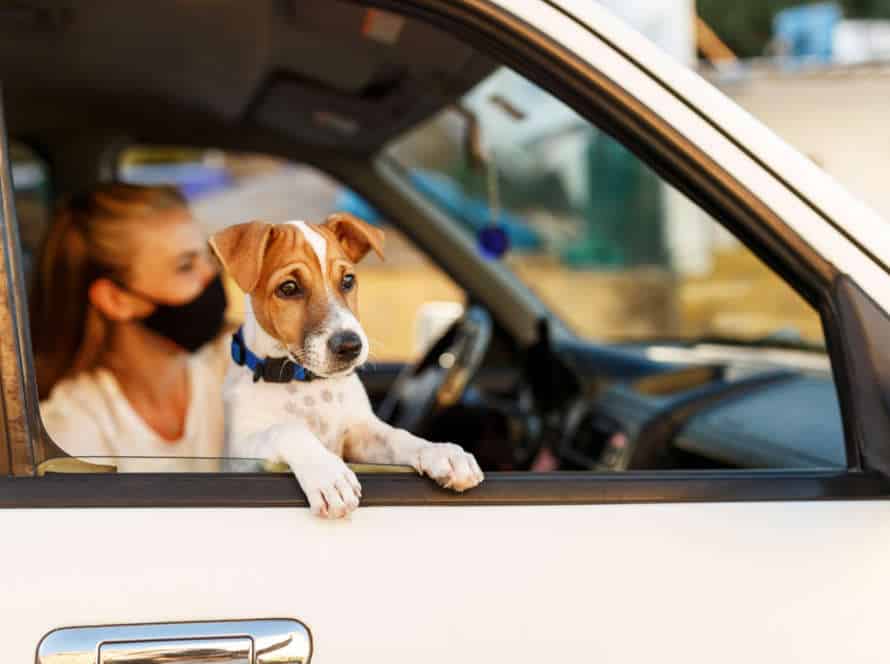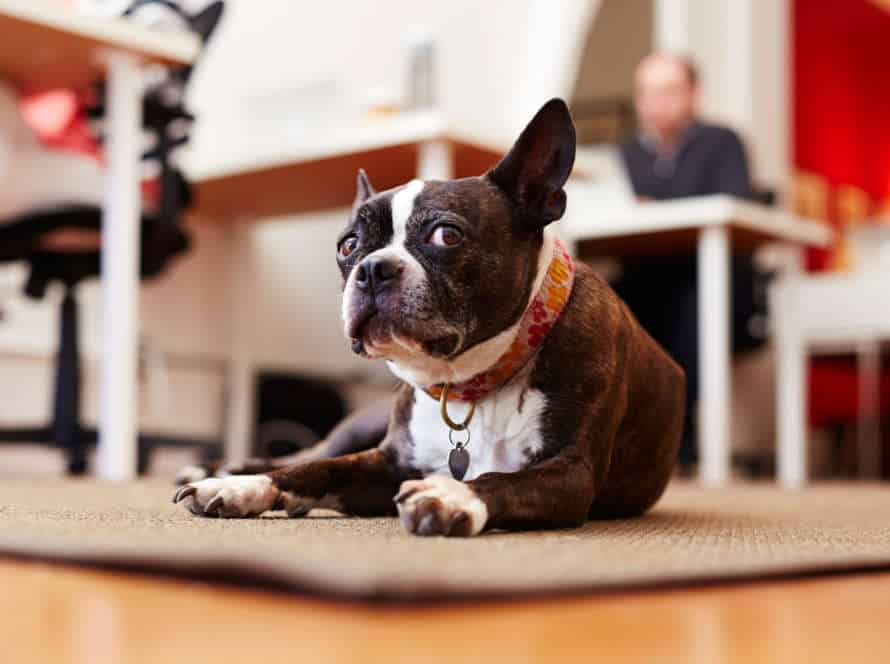The Definition of Resource Guarding in Dogs
Resource Guarding is a behavior that dogs show. They do this when they want to protect something – an object, a person, space, or food. To guard these things, dogs growl and snap aggressively. We need to comprehend why they do this so we can stop it from happening.
Understanding the different types of resource guarding
Resource guarding is a common canine behavior that can show up in many different ways. Knowing the different types of resource guarding is important for dog owners to stop or deal with it.
Primary Resource Guarding: Dogs with primary resource guarding may guard food, water, toys, or other items. They may growl, snap, or bite if someone gets close to their stuff.
Possessive Aggression: Dogs with this type of resource guarding may be scared of losing their items. They may act aggressively towards other animals or people that come near their stuff.
Territorial Resource Guarding: Dogs that do territorial resource guarding may defend their space. They can bark, growl or bite if someone enters their territory.
Parental Resource Guarding: Dogs that are aggressive to people or animals who go near their puppies are exhibiting parental resource guarding.
Getting help from a professional dog trainer or animal behaviorist is essential to manage resource guarding behavior in canines effectively.
What causes resource guarding in dogs?
Resource guarding is a behavior issue seen in dogs that can cause aggression towards owners or other animals. It happens when a pup believes something is important and tries to defend it from potential danger. The root of this problem includes genetics, upbringing and past encounters. Often, dogs become possessive as it was unintentionally rewarded in the past.
Resource guarding is when a dog becomes defensive and possessive of things they own – like food, toys and sleeping spots. They may growl, snarl or bite if people come close while they have the item.
By learning the source of resource guarding, owners can prevent and treat it with the right training and behavior modification.
Recognizing the signs of resource guarding in dogs
Resource guarding in dogs is a common behavior. It’s when they protect their things, like food or toys, from other animals or humans. This evolved from their pack animal past, where they had to compete for resources. Neglect, abuse, or trauma can cause anxiety, fear, and aggression too.
To spot resource guarding, look for warning signs like growling, snarling, biting, and stiff body posture. This can be managed with positive reinforcement training, desensitization, and counter-conditioning. Understanding the root cause is key.
Risk Factors for Resource Guarding in Dogs
Resource guarding in dogs is a behavior observed frequently. It can be a signal of fear and worry. To comprehend resource guarding better, it’s important to recognize the various risk factors that may contribute to it. This article will investigate those risk factors, how to spot them, and how to manage the behavior.
Genetics and breeding practices
Resource guarding in dogs is frequent. It can be due to genetics and/or breeding practices. Ancestral scavenging and protecting food resources often cause a predisposition to resource guarding. Breeding for guarding instincts can also make resource guarding more likely.
To manage this, it’s important to understand their history. Early socialization and training can help reduce it. Additionally, create a positive and safe environment. This can make your dog feel secure and comfortable around people and other animals.
Pro Tip: If you have a dog that guards resources, consult a professional dog trainer or animal behaviorist. Together, you can develop a training and management plan.
Early life experiences
Early life has a major effect on a pup’s conduct, including the expansion of resource guarding tendencies.
These are some risk factors linked to resource guarding in dogs, due to their early life experiences:
- Separating from littermates and mum before 8 weeks: If a pup is separated from its mother and littermates before 8 weeks, it is more at risk of forming resource guarding habits.
- No socialization: Pups with no contact with a variety of people, creatures, and situations during their first few months may become fearful, anxious, and possessive.
- Trauma and mistreatment: Canines who’ve been through trauma, mistreatment, or negligence in their early life could become territorial and aggressive to protect their resources.
- Overprotective or missing mother: Pups with an overprotective or missing mother may create resource guarding tendencies as a result of lacking socialization and safety.
Knowing these risk factors can help pup owners and trainers spot and tackle resource guarding practices in their pooches.
Socialization and training
Socialization and training are key to stopping resource guarding in dogs. To help them feel at ease around humans and other dogs, try these tips:
- Introduce your dog to people, animals, and different places slowly, and in a positive way. Experiencing new things as a puppy can help them better understand the world, and lessen their worries.
- Teach basic commands like “sit,” “stay,” “come,” and “leave it.” This will help you manage their behavior, and create a great bond with them.
- Reward good conduct with treats, toys, and compliments. Positive reinforcement will motivate them to keep performing desired behaviors and build confidence.
- If your dog is still exhibiting resource guarding behaviors, seek professional help. A trainer or behaviorist can customize strategies and create a personal plan for your pup.
Pro Tip: Consistent socialization and training can protect against many dog behavior issues, and strengthen the connection between dog and owner.
Treating Resource Guarding in Dogs
Resource Guarding is a behavior that dogs are naturally born with. This can be worrying for pet owners. It can show up in many ways. For example, a dog might growl or snarl when another pet or person gets near its food. Or, it might snap at somebody who gets close while it’s holding something.
To treat this behavior, the root causes should first be understood. In this section, we’ll look into the origin of Resource Guarding.
Prevention and early intervention
Resource guarding in dogs can be treated. Prevention and early intervention are key. Understand the roots of this behavior for help. Here are some strategies:
Prevention:
- Train basic obedience, socialize with other dogs and people.
- Create a positive food association with puzzles.
Early Intervention:
- Watch for signs of guarding, such as growling.
- Intervene with distraction or treats.
- Use positive reinforcement techniques, like clicker training or verbal praise.
- Get help from a professional if needed.
Positive reinforcement training
Resource guarding in dogs can be tackled with positive reinforcement training. This emphasizes changing the dog’s behavior and rewarding them for willingly giving up their resources. It has been proved to be very useful! To stop your dog from resource guarding, take these steps:
- Identify which things make your dog possessive.
- Begin with tiny, cheap items they’re less likely to guard.
- Reward them with treats and compliments when they let go of the item.
- Slowly increase the value of the items.
With effort and patience, positive reinforcement training can help your dog’s behavior and protect against resource guarding in the future.
Counterconditioning and desensitization
Two great methods to help dogs with resource guarding are counterconditioning and desensitization.
Counterconditioning is transforming the pup’s reaction to a certain situation. For instance, teaching them that a human or another pup near their food dish is not a threat. This requires exposing them to the trigger very slowly, plus giving rewards such as treats, compliments and playtime.
Desensitization is introducing the dog to the trigger stimulus at a low intensity, then increasing it over time. This helps them learn to relate it to something positive.
For either of these techniques, you need to be patient and consistent, and seek help from an experienced dog trainer or behaviorist. With the correct guidance and rewards, most dogs can overcome their guarding behavior and live stress-free.
Management Techniques for Resource Guarding in Dogs
Resource guarding is a type of behavior dogs exhibit. It is when they try to preserve their possessions, for instance food, toys, or even space. Pet owners should be aware of this and intervene correctly. Here are some management techniques for resource guarding in dogs:
Environmental and lifestyle changes to prevent resource guarding
Resource guarding in dogs is a serious problem that needs quick attention. To stop it, we must make changes to their environment, and their lifestyle.
For environmental changes, this might mean:
- Feeding your pup in a place away from other animals.
- Having multiple food and water bowls around the house.
- Not letting other dogs near high-value items.
- Not touching them when they have something special.
For lifestyle changes:
- Doing obedience training and setting limits.
- Taking your pup for regular exercise and playtime.
- Giving them mental stimulation with games and toys.
To manage resource guarding, we must understand why it happens and give a safe, peaceful environment for our pup.
Training and management tools for resource guarding
Resource guarding is a worrying trait that dogs can demonstrate. From growling around their food bowl to biting over a beloved toy, these behaviors can make for an uneasy home environment. Training and management tools can help to ease this behavior in dogs.
Why dogs develop resource guarding behavior can vary. It’s important to first determine the cause – it could be anxiety, insecurity, or even a past event.
Training and management tools to address resource guarding:
- Positive Reinforcement Training: Rewards are given for good behavior, and this can help teach dogs to give up their possessions more easily.
- Counterconditioning: This technique changes the dog’s feelings towards certain stimuli through desensitization and targeted rewards. This trains them to relate certain situations with positive outcomes.
- Management: To reduce the risk of resource guarding, it’s important to create a safe environment for your dog. Provide chew toys and other items, reward good interactions with other dogs, and train them to give up possessions without hesitation.
It’s essential to recognize and work to address any resource guarding behaviors your dog may show to create a harmonious home environment.
Medical options for resource guarding
Treating medical issues that may cause resource guarding in dogs is an option. For example, if a dog has dental pain, it may be defensive when people come near it while it’s eating. Similarly, a dog with poor vision may be anxious when it sees movement near its food bowl. Fixing these problems can help reduce the dog’s anxiety and defensive behavior. However, medical help alone may not be enough to stop the resource guarding. To be successful long-term, a dog trainer should be consulted to help manage and modify the behavior.
Seeking Help for Resource Guarding in Dogs
Resource guarding is when a pup behaves aggressively or protectively. The pup perceives that his/her access to something valuable, such as food, toys, or space, is being threatened. We should be aware of the risks and warning signs of resource guarding. This can help us recognize it and take steps to fix it before it gets worse.
Why does resource guarding occur in dogs? What can we do to address it? This article will explore these questions.
When to seek professional help
Resource guarding is a natural and instinctive behavior in dogs. However, if it becomes aggressive, seeking professional help is essential for the safety of the dog and those around them.
Signs that indicate you should seek help for resource guarding:
- Growling or snapping when someone approaches them while they are eating or playing with toys.
- Showing aggression when someone tries to take away their possessions, like food or toys.
- Stiffening up, baring teeth, or standing rigidly.
- Getting territorial or possessive about their favorite spots, such as their bed or couch.
If you notice any of these signs in your dog, it’s wise to get professional help. A dog trainer or veterinary behaviorist can help guide you through the process and reduce any risks. Early intervention is key for managing resource guarding behavior in dogs.
How to find a qualified behavior professional
- If you need to find a qualified behavior pro to help with resource guarding in your pup, follow these steps:
- Search online, ask your vet for a referral, or contact an animal welfare organization for recommendations.
- Look for certifications from the CCPDT or IAABC. Ask about their training and education, and how they stay up-to-date on the latest research and techniques.
- Request references or client testimonials. A qualified pro should be happy to provide them.
- Schedule a consultation. Meet the pro, discuss your pup’s needs, and get comfortable with them. Build confidence in their ability to help your pup.
What to expect in a behavior consultation
A behavior consultation for resource guarding in dogs requires a full assessment of the behavior, finding the root causes, and developing a special plan to tackle the problem.
What to expect:
- Interview: Ask questions about your dog’s history, behavior, and environment to get a better understanding.
- Observation: A certified trainer or behaviorist will watch your dog’s body language and behavior to assess the intensity and triggers of the resource guarding behavior.
- Root causes: The trainer will work out the root cause of the behavior, this could be fear, anxiety, or dominance.
- Customized plan: When the root cause is figured out, they’ll make a personalized plan. This will feature positive reinforcement techniques, managing tactics, and behavior change exercises tailored to your dog’s individual needs.
- Follow-up: The last step is follow-up meetings to check progress and modify the plan if necessary.
Frequently Asked Questions
1. What is resource guarding in dogs?
Resource guarding refers to the behavior of dogs where they become protective of valuable items such as food, toys, or their owners, and show aggressive behavior towards others who try to approach or take away these items.
2. What are the root causes of resource guarding in dogs?
The root causes of resource guarding in dogs can be genetic, learned behavior, or a combination of both. Some dogs may have an underlying anxiety issue, while others may have experienced a traumatic event that has triggered the behavior.
3. Can resource guarding behavior be corrected in dogs?
Yes, with proper training and behavior modification techniques, resource guarding behavior can be corrected in dogs. However, it takes time, patience, and consistency to achieve long-term success.
4. What are some common signs of resource guarding in dogs?
Common signs of resource guarding in dogs include growling, snapping, biting, and even lunging towards others who approach their valuable items.
5. Can resource guarding behavior be prevented in dogs?
Yes, resource guarding behavior can be prevented in dogs by socializing them with people and other pets from an early age, providing them with positive reinforcement training, and by teaching them good behavior and manners early on.
6. When should I seek professional help for my dog’s resource guarding behavior?
If your dog’s resource guarding behavior is causing harm or posing a threat to people or other pets, it’s important to seek professional help from a certified dog behaviorist or trainer who specializes in resource guarding.







